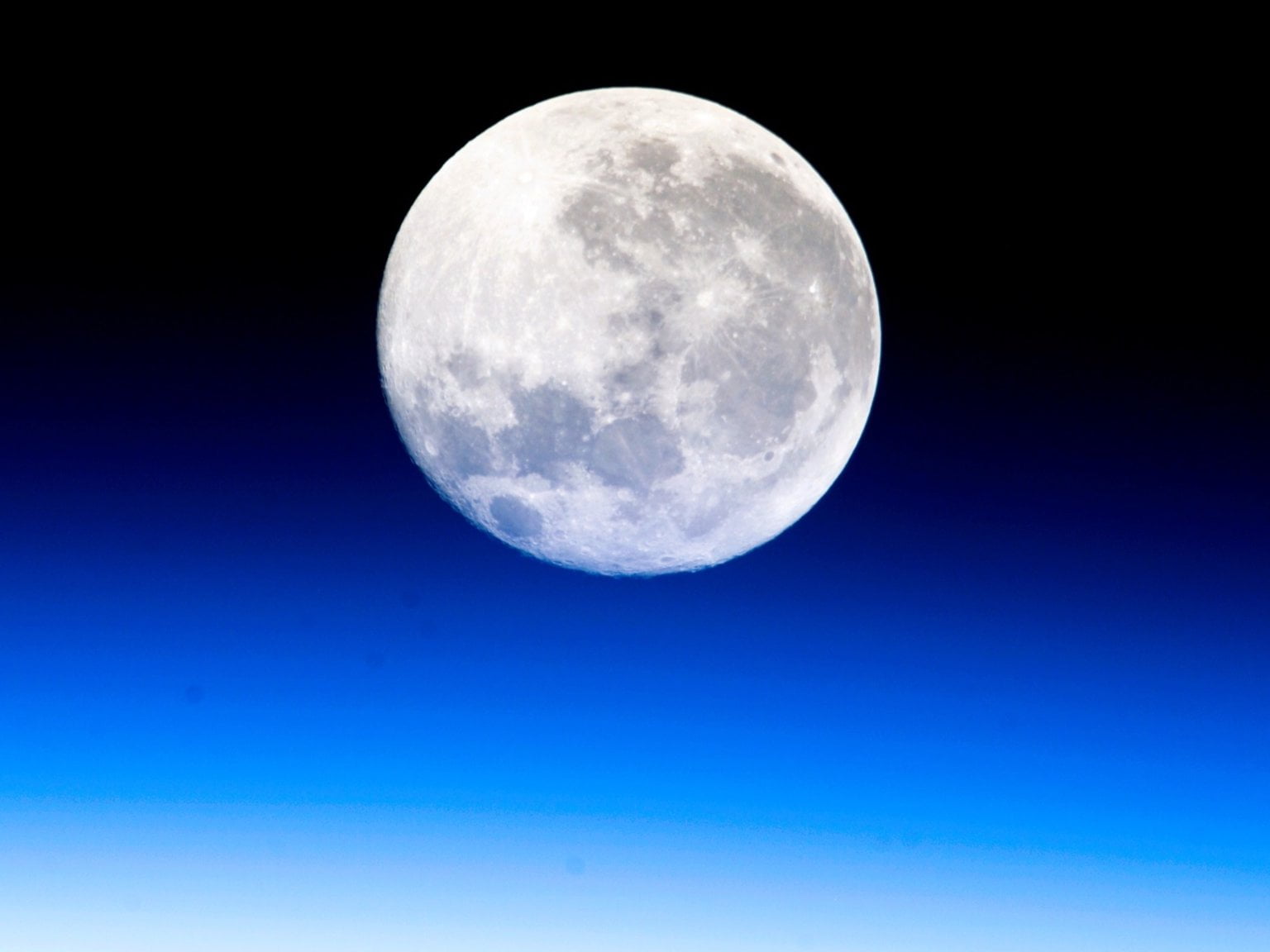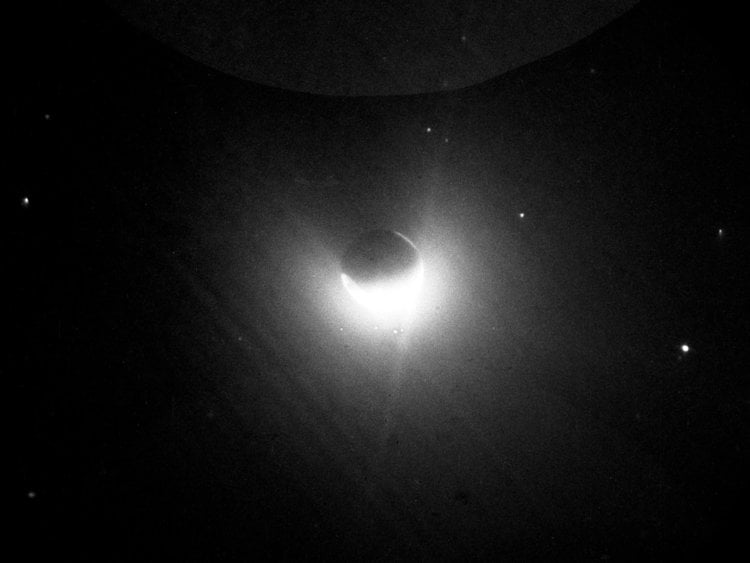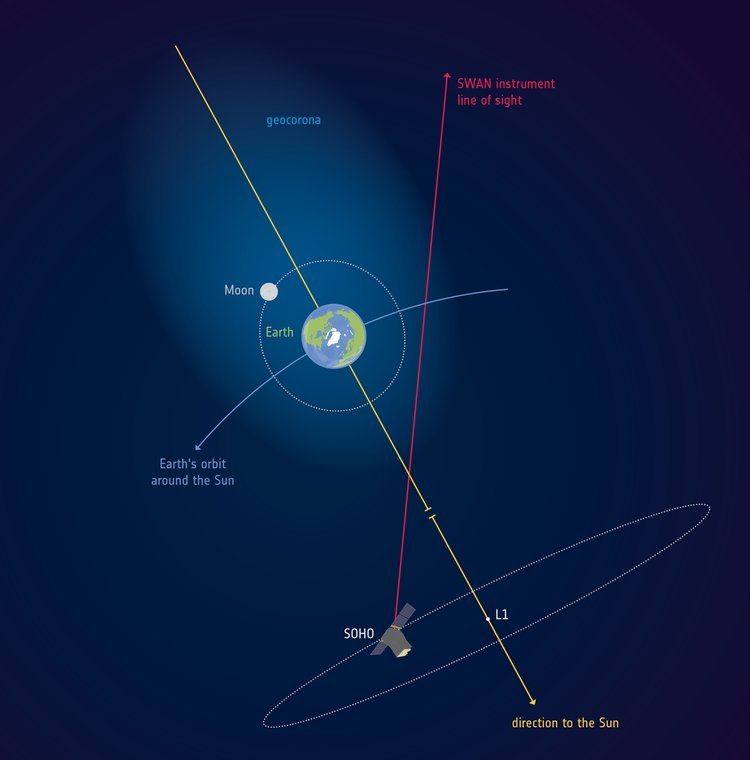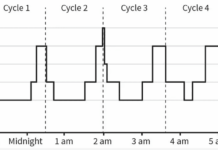
By Dave Mosher
The boundaries between planet Earth, the moon, and deep space just got fuzzier.
According to a new analysis of data recorded by a spacecraft more than 20 years ago, the outer fringes of our cozy planet’s atmosphere stretch far beyond what is typically imagined.
In fact, Earth’s supply of hydrogen gas — the lightest air molecule and element on the Periodic Table— may extend nearly 400,000 miles out.
That’s plenty of reach to envelope the moon, which orbits our planet at an average distance of 238,856 miles away.
“The moon flies through Earth’s atmosphere,” Igor Baliukin, a space physicist at Russia’s Space Research Institute in Moscow, said in a European Space Agency (ESA) press release. “We were not aware of it until we dusted off observations made over two decades ago by the SOHO spacecraft.”
Formally known as the Solar and Heliospheric Observatory, SOHO is operated jointly by NASA and the European Space Agency.
An international team of researchers including Baliukin published their research this month in the journal JGR Space Physics.
Why Earth’s atmosphere extends farther than previously realized

The internationally recognized boundary of space is called the Karman Line, and it’s a border that exists 62 miles (100 kilometers) above Earth’s surface. But contrary to popular belief, Earth’s atmosphere has no clear or official boundary.
Earth’s gravity hugs most of the densest gases close to its surface, including oxygen, nitrogen, carbon dioxide, and water vapor. Meanwhile, hydrogen and other very light gases drift deep into space.
Our planet has a magnetic field that thankfully protects the atmosphere — without it, a never-ending stream of particles from the sun, called the solar wind, might blow all these gases into space. (Mars’ magnetic dynamo, by contrast, shut down billions of years ago, leading to a catastrophic loss of its air supply.)
Scientists knew that fleeting amounts of hydrogen drift far enough into space to merge with the solar wind. But the boundaries or envelope of that hydrogen cloud — called the geocorona — has never been fully clear.
The geocorona is invisible to human eyes. Hydrogen absorbs and re-emits sunlight in ultraviolet light, though, so Apollo 16 astronauts were able to photograph Earth’s tenuous hydrogen cloud with ultraviolet-light-sensitive film during their moon mission in 1972.
SOHO, which has been in operation for about 23 years, carries an ultraviolet-light-recording instrument called SWAN (short for “Solar Wind ANisotropies”). It was designed to study the sun’s particles, which can have huge ramifications on Earth, such as solar storms that can disrupt satellites and take out electrical grids.
However, by carefully reanalyzing two-decade-old observations from SWAN, an international team of scientists narrowed the data down to study hydrogen around Earth.

From that analysis, they learned that even the side of Earth that faces the sun has an envelope of hydrogen extending far beyond the moon’s orbit.
Behind Earth, on its dark side, pressure from the solar wind pushes the planet’s outermost atmosphere into a bulbous tail that extends around 391,000 miles (630,000 kilometers) into deep space.
“Astronauts on the lunar surface did not know that they were actually embedded in the outskirts of the geocorona,” Jean-Loup Bertaux, a geophysicist and coauthor of the new study, said in the release.
The researchers noted that the density of the hydrogen cloud is so fleetingly low that it’s still a vacuum out there. But the discovery could nonetheless have significant ramifications for new observatories that study the universe in normally invisible wavelengths of light.
“Space telescopes observing the sky in ultraviolet wavelengths to study the chemical composition of stars and galaxies would need to take this into account,” Jean-Loup said in the release.
Source: https://www.businessinsider.com
Disclaimer: We at Prepare for Change (PFC) bring you information that is not offered by the mainstream news, and therefore may seem controversial. The opinions, views, statements, and/or information we present are not necessarily promoted, endorsed, espoused, or agreed to by Prepare for Change, its leadership Council, members, those who work with PFC, or those who read its content. However, they are hopefully provocative. Please use discernment! Use logical thinking, your own intuition and your own connection with Source, Spirit and Natural Laws to help you determine what is true and what is not. By sharing information and seeding dialogue, it is our goal to raise consciousness and awareness of higher truths to free us from enslavement of the matrix in this material realm.
 EN
EN FR
FR


























Mars atmosphere did not shutdown billions of years ago. And do you really believe the scientific information has been collecting dust for 20 years!? We knew that in the 1950s.